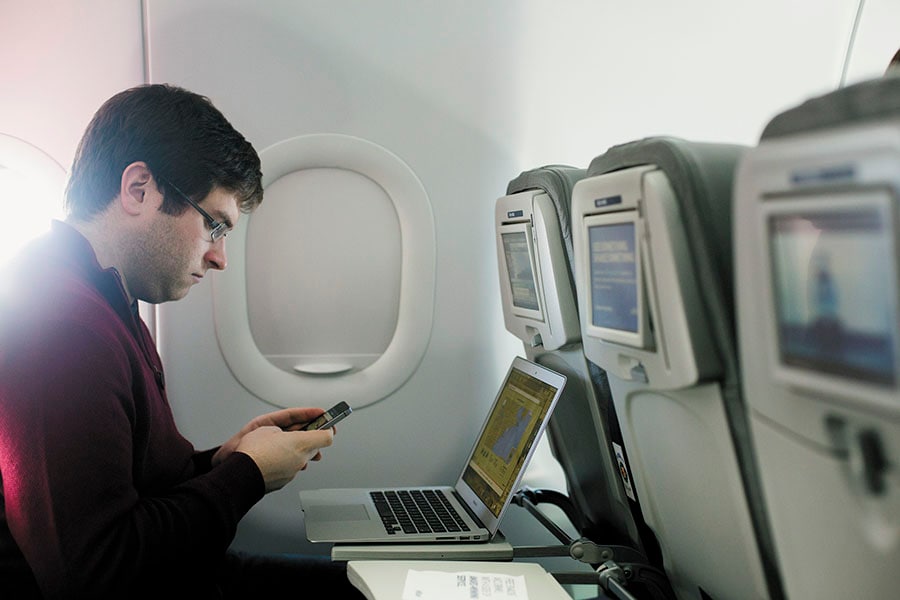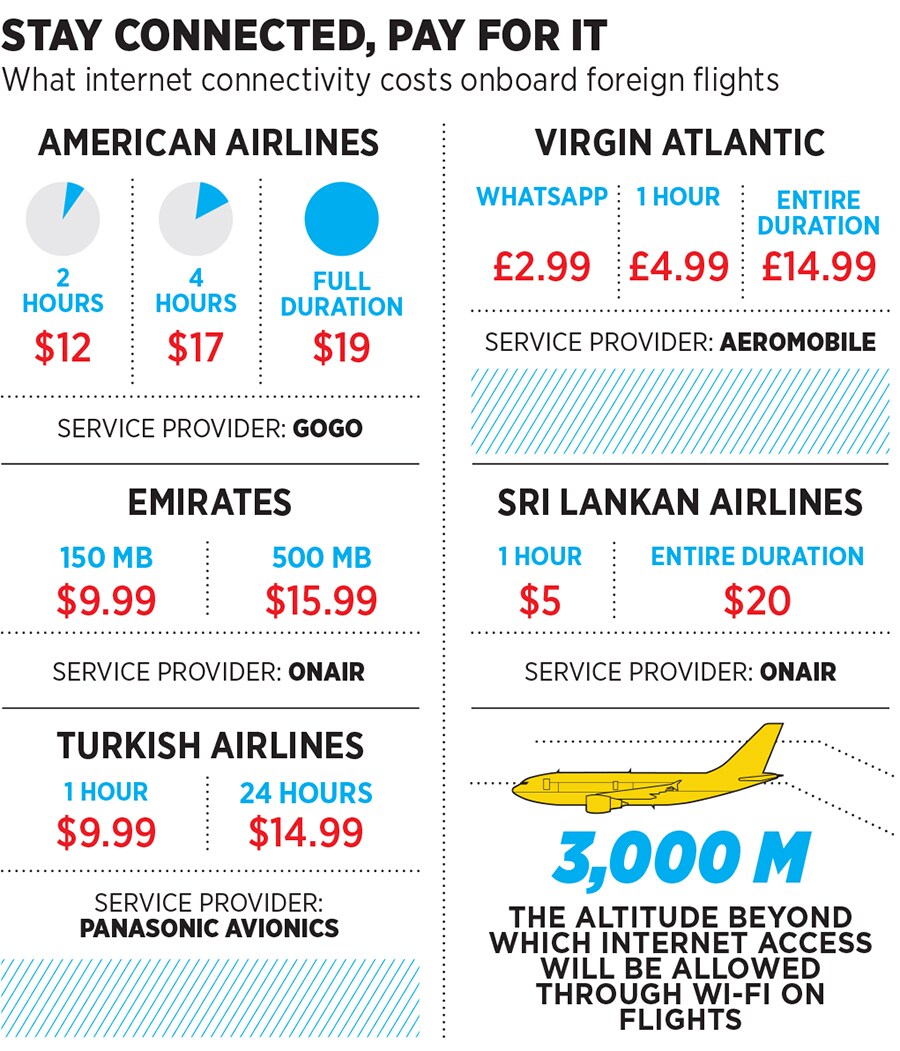In-flight connectivity: Surfing in the sky
Indians can soon upload a selfie on social media mid-air using Wi-Fi on flights, but will have to shell out big bucks for internet connectivity


 Internet on a flight in India is likely to cost between ₹500 and ₹2,000 for 30 to 60 minutes
Internet on a flight in India is likely to cost between ₹500 and ₹2,000 for 30 to 60 minutes
Image: Lucas Jackson / Reuters
With the Telecom Regulatory Authority of India, (Trai) in January giving its nod to in-flight voice and data connectivity, domestic and international fliers within the country’s airspace will soon be able to make calls and browse the internet.
India’s existing laws did not allow access to the internet while aboard an aircraft.
Several Indian airlines are now expected to follow their global counterparts and offer services like Wi-Fi on flights.
At present, Emirates, Qatar Airways, JetBlue Airways and Turkish Airlines and others provide internet services on international routes.
In India, the charges for in-flight internet are likely to be between ₹500 and ₹2,000 for 30 to 60 minutes, in line with international rates.
Internet on flights is provided usually by two means. One, an antenna on the fuselage of the aircraft picks up signals from mobile broadband towers on the ground (but, this can be disrupted by large water bodies).
The second, and the most common, method is via satellite-based systems, which are able to provide connectivity across oceans and mountains. Both are expensive, resulting in high costs to flyers.
“The whole thing should have been done a long time ago,” says Mark Martin, founder of Dubai-based Martin Consulting Llc. “It costs around $250,000 [₹1.5 crore] for fitting the technology in the aircraft. Can airlines afford to instal that today? I am not sure. With operating costs going up now, it might be stupid for airlines to fit them. We should have adopted the technology a long time ago.”
With low-cost carriers currently leading India’s aviation market, it is also unlikely that airlines will opt for a retrofit of the devices.
“It makes sense when purchasing the aircraft,” adds Martin. “But doing it as a retrofit doesn’t make any sense. It would cost about $2.5 million to fit the technology on atleast 10 aircraft and you also have to factor in data connectivity packages. Considering all this, browsing rates could be anywhere between ₹1,200 and ₹1,800 per hour per seat. Is the Indian consumer willing to pay that? I am not sure.”
First Published: Feb 05, 2018, 07:30
Subscribe Now